SMALL ARTHROPODS & THE THORNY PLANT NEAR THE BEACH
The 23rd of June 2021 was a hot and humid day. The sky was covered with clouds. The strong summer sun wasn't hitting directly, but the air felt heavy and hard to breathe. The atmosphere was pretty exhausting even near the sea which can provide a bit of refreshment.
I spent the afternoon on the stretch of coastline called Palera, a couple of kilometers from Liznjan and five or six kilometers from where I live. After a bit of swimming and snorkeling, I went walking across the meadows in search of spiders and insects, and I spent most of that hot and humid afternoon observing nature through the macro lens.
In this post, I'll show you what I found on that occasion.
This bug was photographed on the thorny leaves of the Scolymus hispanicus plant. Can't tell you what species exactly is this, but the genus is Maccevethus, and the family is Rhopalidae, that much I know. It could be the Maccevethus caucasicus. Maybe.
In this set of four photographs, the bug is cleaning its antennae.
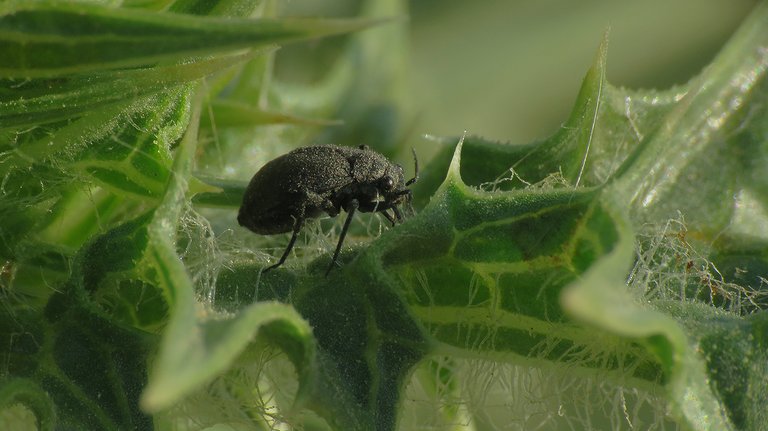
This considerably smaller, completely black bug was found ...
... and photographed a bit further, on another thorny plant of the same kind.
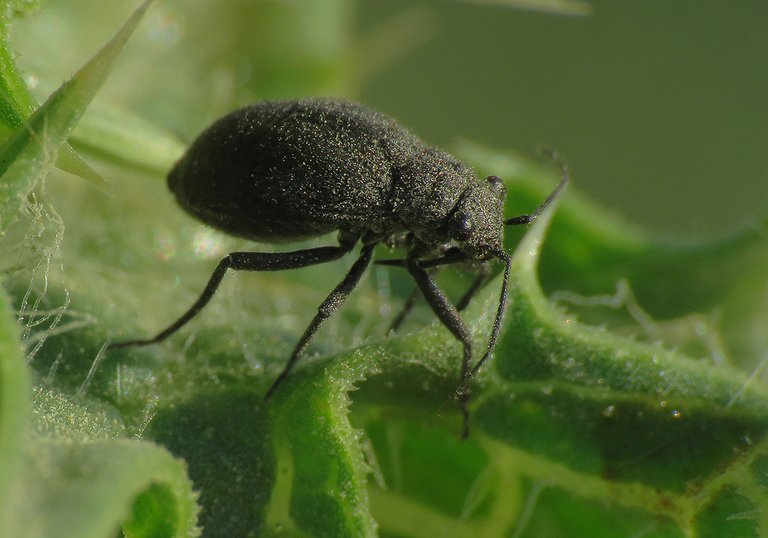
This is the female Orthocephalus coriaceus. A species from the Miridae family. The elongated males look considerably different.
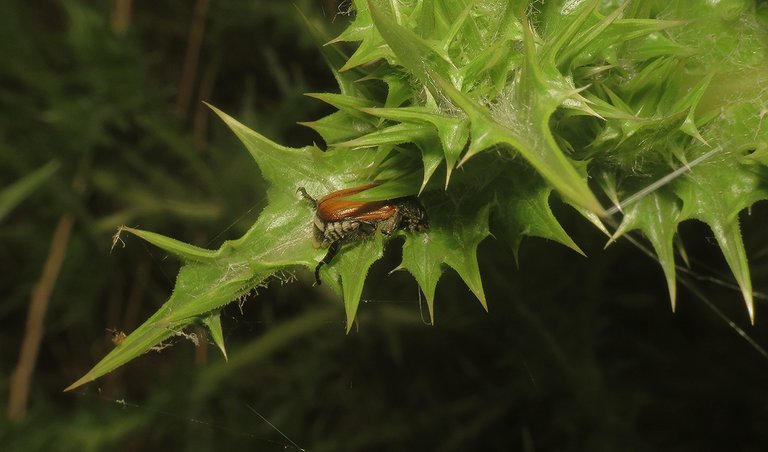
The leaves of the Scolymus hispanicus provide a nice hiding place for many small arthropods. In this photograph, a beetle is resting, sheltered by the thorns.
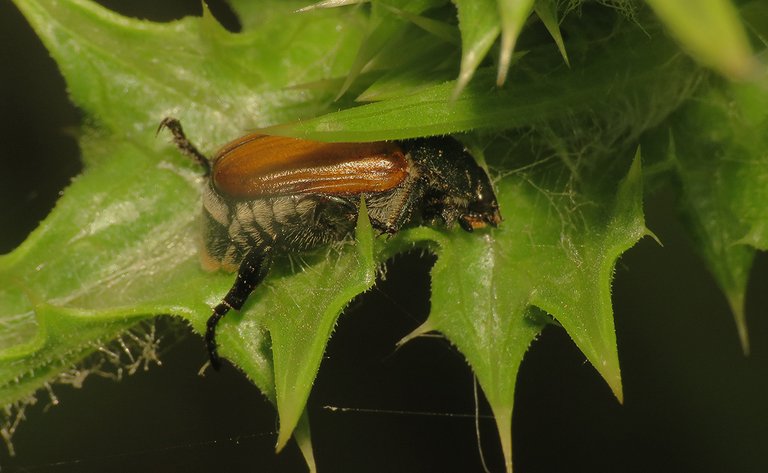
In this case, the genus is Anisoplia, and the family is Scarabaeidae. It could be the Anisoplia agricola. Or the Anisoplia austriaca. Probably one of those two.
Here you can take a break from the macro view and rest your eyes on the cloudy sky.
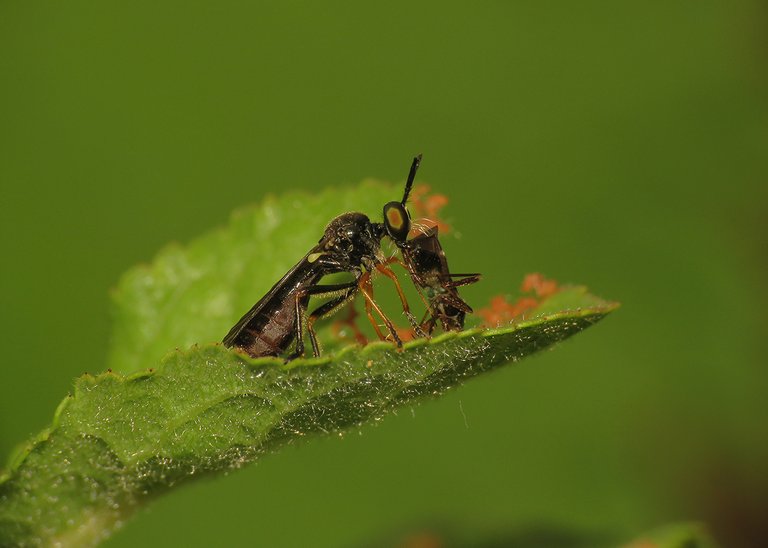
This fly was photographed on the leaf of a shrub that I wasn't able to identify because I don't have wider shots that show more than just a small detail of the leaf.
As you can see, this predatory fly has just caught a small insect.
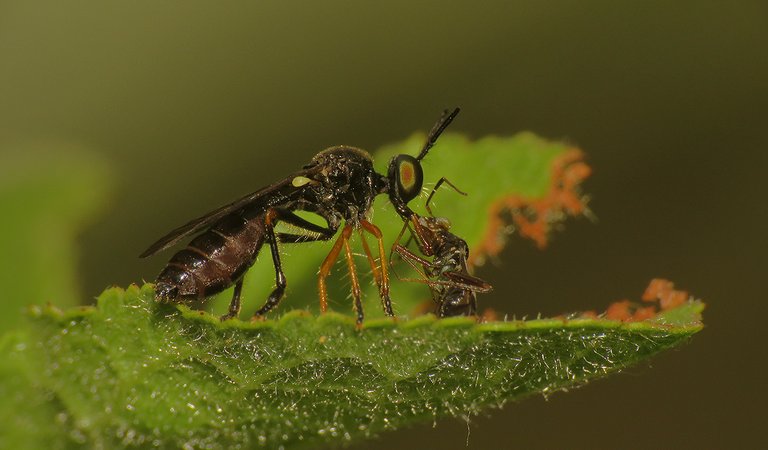
The fly is the Dioctria longicornis from the Asilidae and its prey is a small bug, probably from the Miridae family.
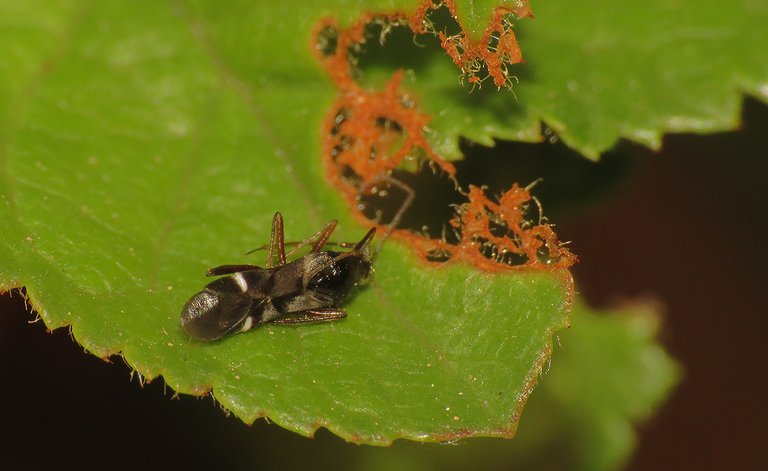
After sucking the liquified internal tissues of its prey, the fly left the exoskeleton and flew away.

A moment later a small moth landed on one of the neighboring leaves. Can't tell you the name of the species. The family is Gelechiidae.
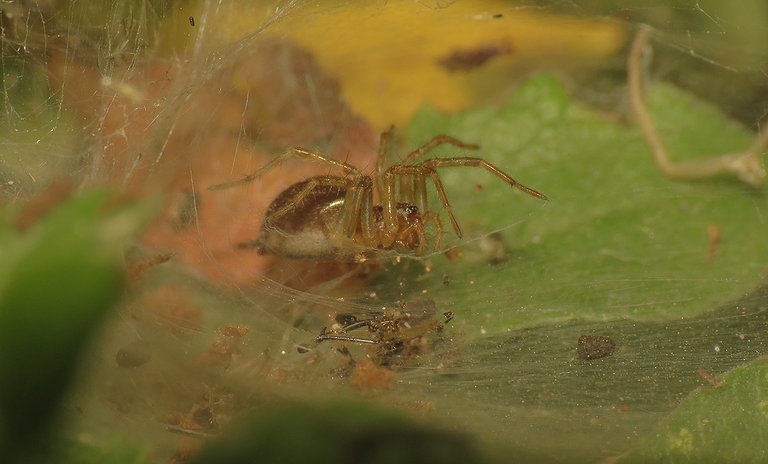
On the herbaceous vegetation under the shrub, the Allagelena gracilens spider has built a pretty large horizontal web.
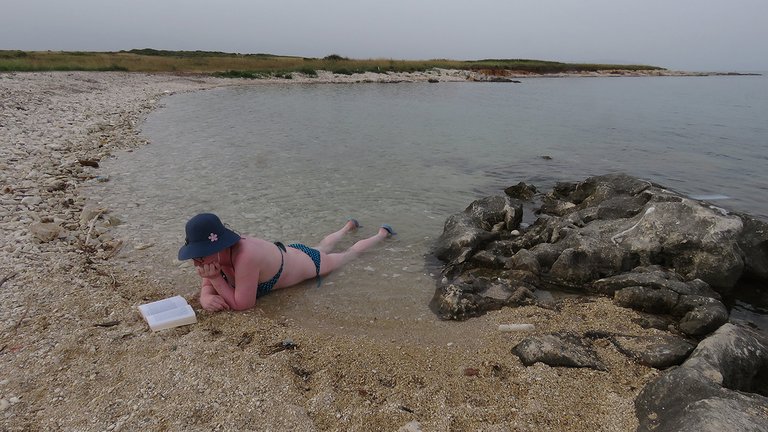
And now, before continuing with the small arthropods, you can take a look at the beach in this photograph.
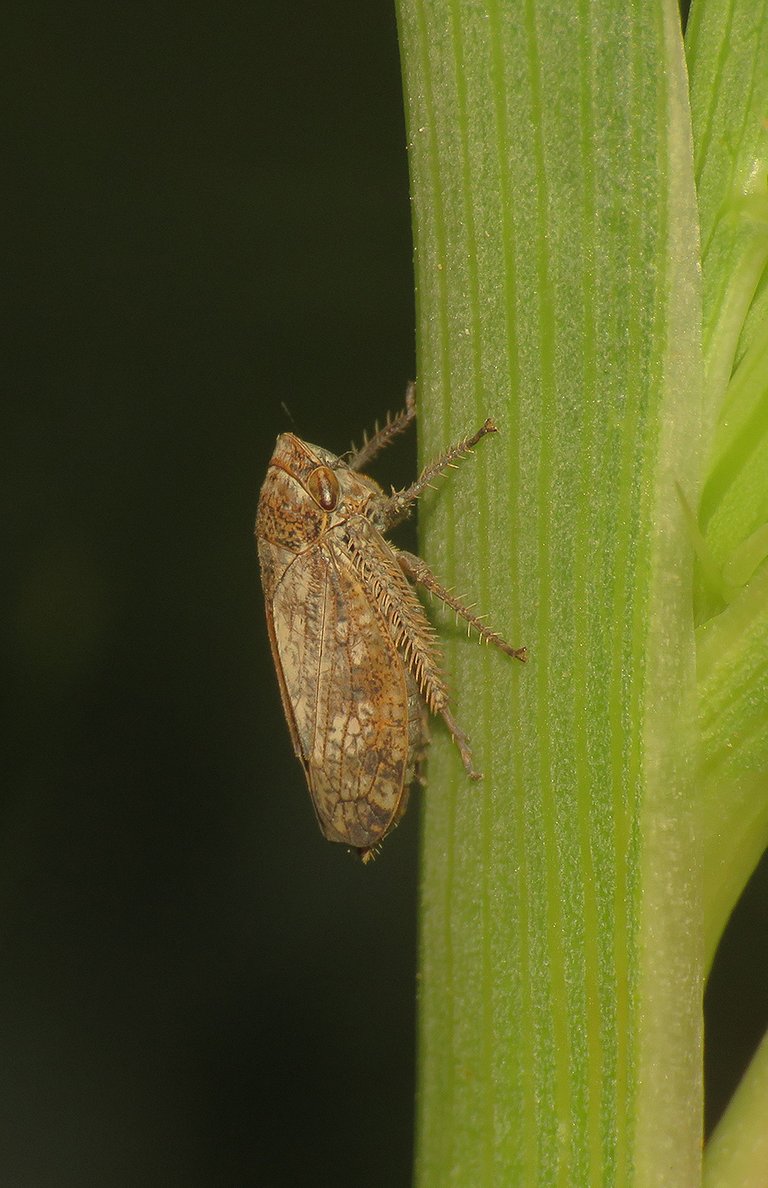
This leafhopper was found on the Scolymus hispanicus plant.
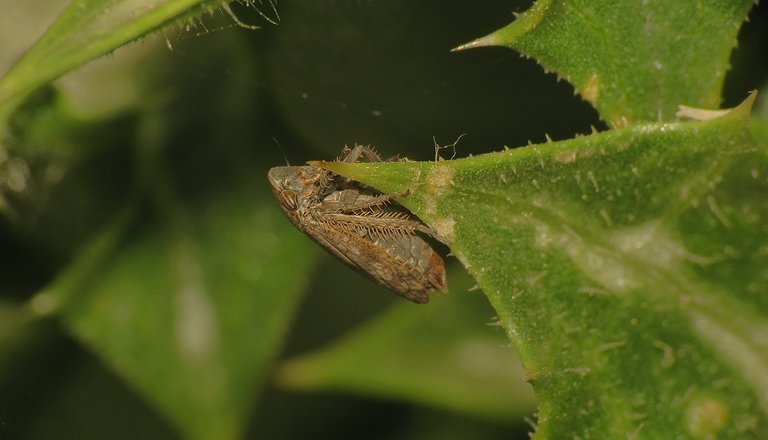
Can't tell you the name or anything else about the species. The family is Cicadellidae.
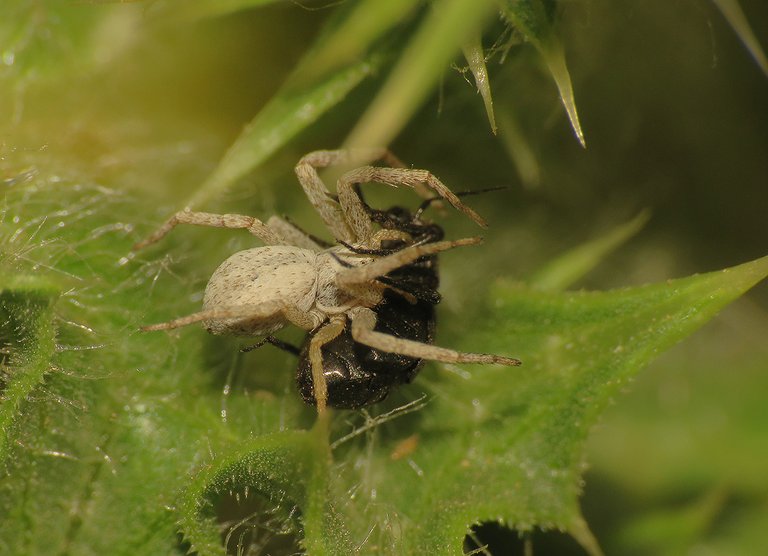
A bit later, always on the thorny leaves of the same kind of plant, I came across a spider that has caught an Orthocephalus coriaceus bug.
The spider is the Philodromus albidus, a species from the Philodromidae family.
This was the last scene I photographed on the 23rd of June 2021, so the post must end here.
The following links will take you to the sites with more information about some of the protagonists of this post. I found some stuff about them there.
https://ukrbin.com/index.php?id=38688&taxamodesp=1
https://en.wikipedia.org/wiki/Scolymus_hispanicus
https://en.wikipedia.org/wiki/Orthocephalus_coriaceus
https://en.wikipedia.org/wiki/Anisoplia
https://observation.org/species/8215/
https://en.wikipedia.org/wiki/Gelechiidae
https://en.wikipedia.org/wiki/Philodromus_albidus

AND THAT'S IT. AS ALWAYS HERE ON HIVE, THE PHOTOGRAPHS ARE MY WORK - THE END.
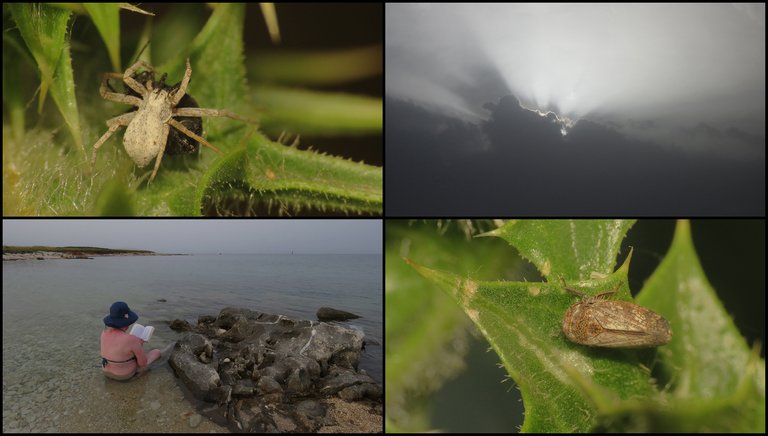

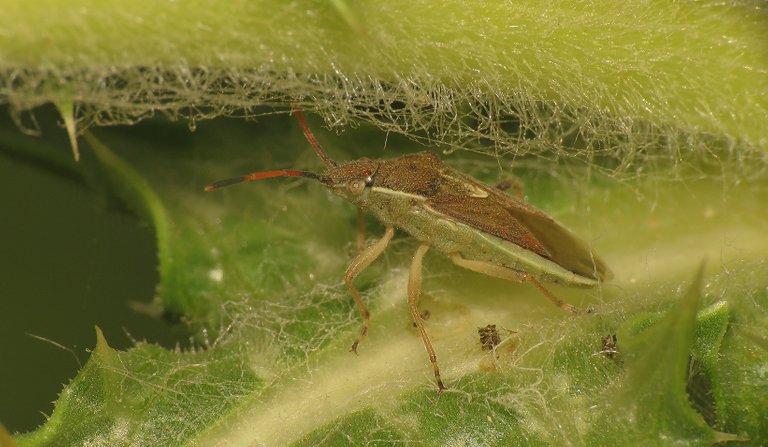
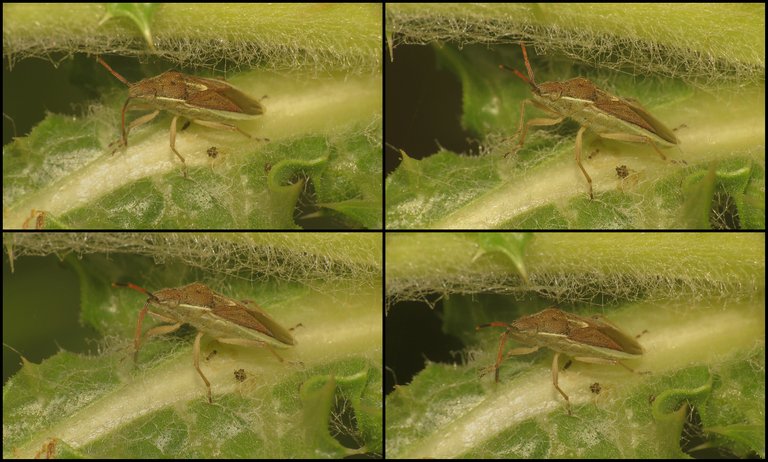


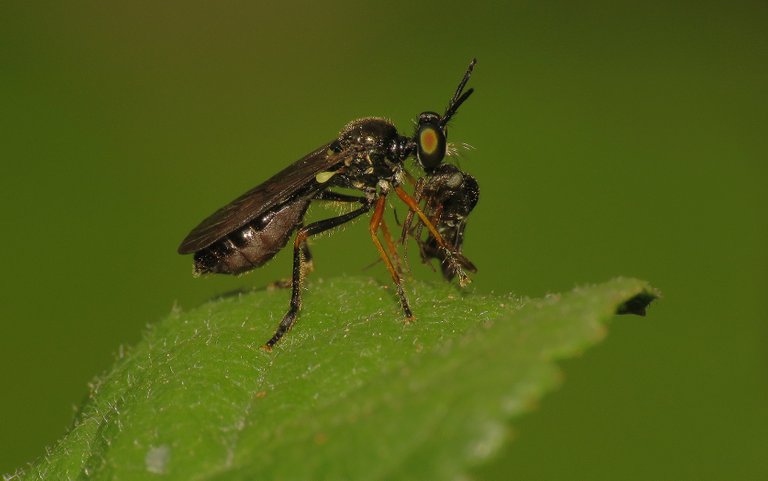
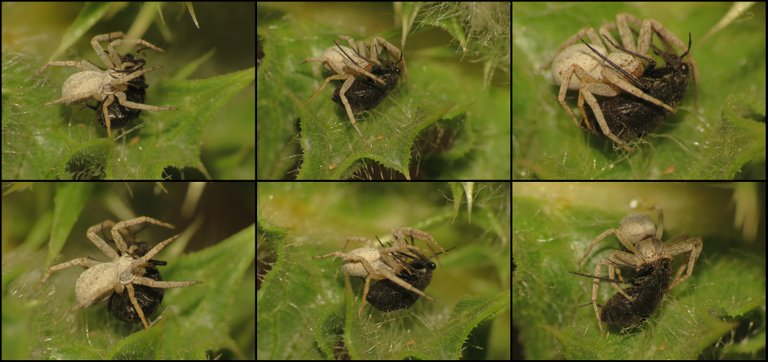
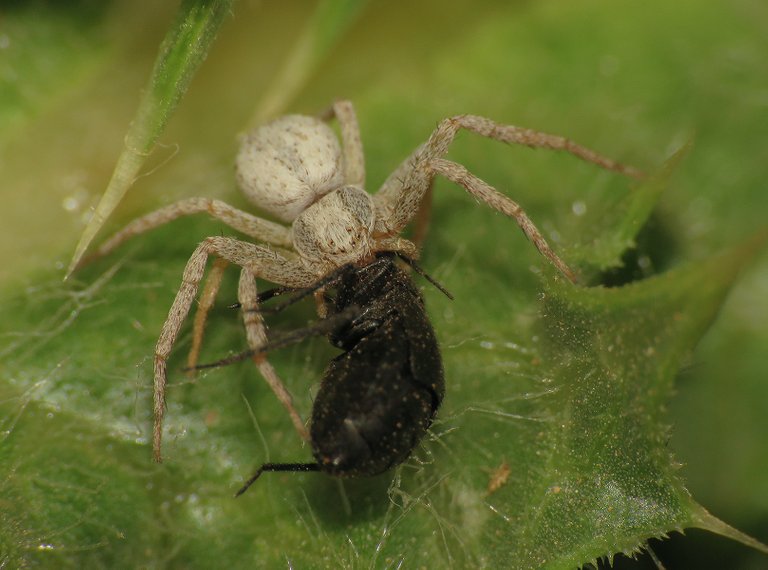
Hi there, @borjan. 😃 Insects are such fascinating creatures, yes? They are so many and of various species that requires considerable study. I read somewhere that if humans go extinct, insects cannot because they are innumerable. I think it may be true.
The way that Dioctria longicornis predator fly attacked the small bug reminds me that they have to fight to survive in their world too. Lovely photos as usual.
You snorkel? Pictures of underwater please! 😅 Have a good day. 😊😊
😀 Don't have the equipment for underwater photography. Can't take images of what I see and upload them here.
😅 That's true. Underwater requires a different kind of camera. It would be nice to see some underwater scenes. 😊
Amazing photography sir 😍😍
Those are some impressive macro shots as always my friend. Love how you manage to capture those little insects.
The spider that holding into its prey is the one I love the most. cheers
It turns out that in your country there are so many animals that need to be taken care of, I really like small animals. Hopefully you are always in good health
Dear @borjan friend, I enjoy when you share these kinds of posts full of great bug photos 🐜... It's like you have a detector for them and they want to pose for you!... Bravo!!!
!discovery 40
!PIZZA
Thanks. 🙂I like spending time with bugs and observing their life through the macro lens. If you approach them slowly and silently, they are usually easy to photograph. Even better, if there is time to spare, is to sit down near flowers or other feeding places that attract insects, and wait for them to come close.
This post was shared and voted inside the discord by the curators team of discovery-it
Join our community! hive-193212
Discovery-it is also a Witness, vote for us here
Delegate to us for passive income. Check our 80% fee-back Program
I gifted $PIZZA slices here:
@jlinaresp(5/10) tipped @borjan (x1)
Please vote for pizza.witness!
Yay! 🤗
Your content has been boosted with Ecency Points, by @hive-145540.
Use Ecency daily to boost your growth on platform!
Support Ecency
Vote for new Proposal
Delegate HP and earn more
Congratulations, your post has been upvoted by @dsc-r2cornell, which is the curating account for @R2cornell's Discord Community.
Wao you are sharing with us very great knowledge about insects and complete photography is valuable and amazing. I like to know more about insects. Last picture of your photography is my favorite. Natural beauty always attracts the people's. You always share valuable posts with us.
https://twitter.com/1475819111271870469/status/1604884477536342021
The rewards earned on this comment will go directly to the people( @ladytitan ) sharing the post on Twitter as long as they are registered with @poshtoken. Sign up at https://hiveposh.com.
Nice animals :)
You have absolutely great eye for the details in the macro shots! the predatory fly that just caught a small insect was a really good shoot man! we dont see that everyday
Congratulations @borjan! You have completed the following achievement on the Hive blockchain And have been rewarded with New badge(s)
Your next target is to reach 42000 upvotes.
You can view your badges on your board and compare yourself to others in the Ranking
If you no longer want to receive notifications, reply to this comment with the word
STOPTo support your work, I also upvoted your post!
Check out our last posts:
Support the HiveBuzz project. Vote for our proposal!
Without a doubt, the photo of the beach breaks the series of arthropods, I didn't really look at the water, I looked at the tranquility of the person lying on the sand reading a book and I felt a little envious thinking about all the accumulated work I have, but hey , as they say , it is envy of the good